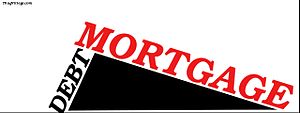Is it time to consider refinancing your home?
Refinancing is simply the process of paying off your existing mortgage with a new loan with different terms, such as a lower rate or shorter amortization rate.
The idea of refinancing your home may be appealing but the process can seem confusing and even intimidating.
There are a few issues to seriously consider before committing to a refinance loan.
Families consider refinancing for a variety of reasons. A common benefit is the lowering of the monthly cost by obtaining a loan with a lower interest rate. The long-term costs of a refinanced loan may be lower, and the time it takes to pay off the mortgage may be shorter.
Another reason to refinance is that it may be possible to take a cash-out refinance, a good option for families who need some money to pay for large purchases, such as college tuition or remodeling a house. When considering taking a cash-out refinance loan, it is important to consider the overall cost of the refinance, and weigh it against the benefit to be gained with the investment. A college education, for example, promises a fair return on your investment. Remodeling your home may increase the value, but if you overspend, it may be difficult to recoup your investment.
The first step to refinancing your home is to accurately assess its value. Your property tax bill is one source of information. Check the assessed value against real estate listings in your area to get an idea of an up-to-date value of your home. Once you have an idea of how much your home is currently worth, you can compare that number to the amount still due on your current mortgage, and get an idea of whether refinancing is worthwhile.
Refinancing means that you are effectively buying your home from yourself, and from the bank. Just like a first mortgage, a refinancing loan incurs some costs. Closing costs, processing fees and points, are all costs associated with refinancing a home. Your lender will give you a written full disclosure, detailing all the costs of the loan, before you are legally obligated to accept the refinancing loan.
To be sure the refinancing loan is the best option for you the upfront costs should be weighed against any savings. For example, if when you purchased your home you took out a mortgage for $250,000, at a rate of 7%, your monthly payment would be $1,975, and you will pay a total of $344,293 in interest over the course of the loan. After ten years of on-time payments, you will have a balance of $161,509. By refinancing the balance at a rate of 6% for a second 30-year term, the payment drops to $1,280, a monthly savings of $695.
Of course, it is important to take into consideration the costs of acquiring the refinancing loan. If the closing costs total $2,500, it will take four monthly payments for the savings earned to pay off the cost of obtaining the loan.
Related articles
- How to Refinance a Mortgage (answers.com)
- The Money-Saving Refinancing Move You’ve Never Considered (dailyfinance.com)
- Before refinancing, consider a few things (freedommortgage.com)



Ideas For The Cash Needy Homeowner
http://www.newsoxy.com/real-estate/ideas-for-the-cash-needy-homeowner-23542.html